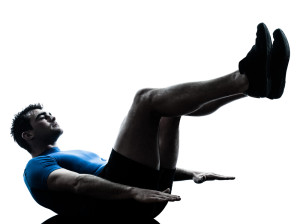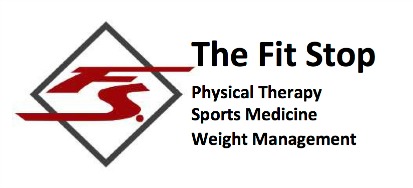5 Reasons To Perform Pilates After Physical Therapy
Have you ever tried Pilates? I don’t care if you’re a guy or gal, 25 or 65, all of us could stand to improve our bodies and our health! As physical therapists we often get asked, “What can I do after physical therapy to stay healthy and keep from getting reinjured?” It’s a great question that we love to hear and can have a variety of answers depending on the individual. For many patients, Pilates can be an awesome way to continue the progress made in physical therapy. Today we’re sharing our top 5 reasons we believe Pilates is an excellent choice following completion of physical therapy.
1. Increase Your Body Awareness and Control
Pilates pushes you to pay attention to your body in ways that you may never have experienced. So many times during physical therapy, patients tell us that we’re working muscles they’ve never felt before! Day-to-day, we often don’t take the time to really pay attention to what our bodies are telling us. We’re too busy tuning it out while keeping up with the rest of life. We generally seem to wait until pain is screaming for attention before taking note of a problem in a joint or muscle. Pilates uses methods and positions that encourage you to take note of specific weaknesses before they cause injury or dysfunction.
We also can’t understate the importance of staying in control of your movements during exercise. Pilates masterfully guides you through movement patterns that require attention to every aspect of your muscle contractions and body positioning. In fact, Pilates is so centered on controlling your body that its creator Joseph Pilates initially called it “Contrology.” Go figure.
2. Strengthen Your Core
 Think of any movement related to your favorite activity… Now imagine performing that with a torso made of Jell-O. Not very pretty, right? All body motions, even those using our arms and legs require a stable “core” off which to move. Without that central stability, you can’t expect to have well coordinated peripheral movement. Pilates does a great job of keeping the core engaged during your workouts, leading to an exceptionally stable frame.
Think of any movement related to your favorite activity… Now imagine performing that with a torso made of Jell-O. Not very pretty, right? All body motions, even those using our arms and legs require a stable “core” off which to move. Without that central stability, you can’t expect to have well coordinated peripheral movement. Pilates does a great job of keeping the core engaged during your workouts, leading to an exceptionally stable frame.
Much of the back pain we see in the clinic can be attributed to a weak core, and many of the exercises we prescribe for back pain are centered on improving functional core stability. Being so important for your spine and overall health, we love that Pilates works to keep those crucial central muscles strong while simultaneously working your arms and legs. It’s a complete body workout!
3. Achieve and Maintain Proper Posture
This one usually goes hand-in-hand with #2, as poor posture is often found alongside a weak core. No surprise here, but poor posture can often lead a myriad of back and neck issues down the road (check out our post on how to improve your posture by changing the ergonomics of your workspace). Pilates instructors are trained in identifying and correcting weakness and compensation that lead to abnormal or poor posture. Making permanent changes to your posture through targeted Pilates exercises will build on the strong foundational principles learned in physical therapy, leading to less neck and back pain down the road.
 4. Stay Safe and Be Gentle on Joints
4. Stay Safe and Be Gentle on Joints
Following an injury or surgery, physical therapy will allow you to safely regain range of motion and strength. Though it may be hard to trust your body to hold up after such an experience, your joints and muscles need ongoing regular exercise to maintain healthy blood flow and to build on your functional strength. No matter the state of your joints, Pilates can provide low to no-impact exercise that can safely promote continued joint health.
Because Pilates exercises are focused on control throughout your range of motion, you can very safely achieve a full body workout without putting undue stress on recently rehabilitated injuries. Great exercise with a low risk of injury; it’s an awesome 2-for-1!
5. Burn Those Calories
Let’s face it; most of us wouldn’t be a bit sad if we burned through a couple hundred additional calories each week! In addition to the safe strength gains, increased muscle control, and improved body awareness to be gained through Pilates, you’ll also be burning up some extra calories! Though individual estimates are difficult to pin down, you’ll likely burn between 200-300 calories/hour for beginner mat Pilates and up to 360-430 calories/hour for advanced Pilates!
Whether you decide to start on a mat or prefer to work on equipment such as a reformer, Pilates is an excellent choice for someone looking to continue improving their health and wellness after physical therapy. Because correct technique is so central to Pilates, we recommend performing exercises under the guidance of a trained Pilates instructor. Here at The Fit Stop Physical Therapy, we’re fortunate to be integrated with gyms offering Pilates classes by highly trained instructors with years of experience helping individuals get into incredible shape! There’s a saying about Pilates… in 10 sessions you will feel better, in 20 sessions you will look better, in 30 sessions you will have a new body!
If you’ve got an injury that’s preventing you from enjoying life to the fullest, come in to one of our convenient locations to consult with a physical therapist and see how we can get you back in action sooner!
Heber City Salt Lake Downtown (City Creek) Farmington (Station Park)
Alex Engar, SPT
Fit Stop Physical Therapy – Farmington
172 N East Promontory Ste 200
Farmington, UT 84025
(801) 558-8612


